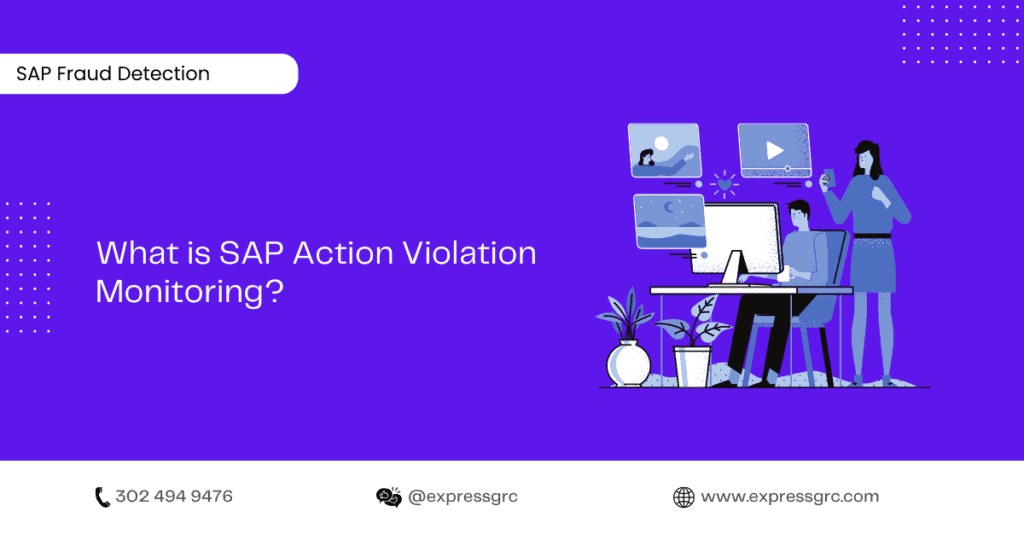SAP Action Violation Monitoring (AVM) is a critical component of SAP Governance, Risk, and Compliance (GRC) solutions. It is designed to help organizations ensure compliance with internal policies, external regulations, and industry standards by monitoring and managing potential violations of access controls and segregation of duties (SoD) within their SAP systems.
Table of Contents
- Introduction
- Understanding SAP Governance, Risk, and Compliance (GRC)
- The Importance of Access Controls and SoD
- Overview of SAP Action Violation Monitoring (AVM)
- Key Features of AVM
- Benefits of Implementing AVM
- Best Practices for Effective AVM
- Challenges and Considerations
- Integration with Other SAP GRC Modules
- Case Studies: Successful AVM Implementations
- Future Trends and Enhancements
- Conclusion
- FAQs
1. Introduction
In today’s business landscape, where data breaches and fraud incidents are on the rise, organizations need robust mechanisms to ensure the security and compliance of their SAP systems. SAP GRC solutions, including SAP Action Violation Monitoring, play a crucial role in addressing these challenges.

2. Understanding SAP Governance, Risk, and Compliance (GRC)
SAP GRC refers to a set of tools and processes that help organizations manage risk, ensure compliance with regulations, and protect sensitive data. It encompasses various modules, including Access Control, Process Control, Risk Management, and Fraud Management.
3. The Importance of Access Controls and SoD
Access controls and segregation of duties are essential to prevent unauthorized access and potential fraud within SAP systems. Access controls define who can access specific transactions or data, while SoD ensures that no single user has conflicting roles or permissions that could lead to abuse or fraud.
4. Overview of SAP Action Violation Monitoring (AVM)
SAP Action Violation Monitoring is a feature within SAP Access Control that continuously monitors user actions and identifies potential violations of access controls and SoD. It analyzes user activities, such as transaction execution, data access, and system configuration, to detect any unauthorized or conflicting actions.
5. Key Features of AVM
- Real-time Monitoring: AVM provides real-time monitoring capabilities to detect violations as they occur.
- Rule-Based Analysis: AVM uses predefined rules to analyze user actions and identify violations based on access control policies and SoD rules.
- Alerts and Notifications: When a violation is detected, AVM triggers alerts and notifications to relevant stakeholders for immediate action.
- Remediation Workflows: AVM supports the creation of remediation workflows to address and resolve violations effectively.
- Audit Trail and Reporting: AVM maintains an audit trail of user actions and generates comprehensive reports for compliance audits.
6. Benefits of Implementing AVM
- Enhanced Compliance: AVM helps organizations ensure compliance with internal policies, external regulations, and industry standards, reducing the risk of penalties, legal issues, and reputational damage.
- Fraud Prevention: By monitoring user actions and detecting potential violations, AVM mitigates the risk of fraud and unauthorized activities within SAP systems.
- Operational Efficiency: AVM streamlines the detection and resolution of access control and SoD violations, reducing manual efforts and improving overall operational efficiency.
- Proactive Risk Management: With real-time monitoring and alerts, AVM enables proactive risk management, allowing organizations to address potential issues promptly.
7. Best Practices for Effective AVM
- Regular Rule Review: Regularly review and update the predefined rules to ensure they align with the organization’s evolving access control policies and compliance requirements.
- Continuous Monitoring: Implement continuous monitoring to detect violations in real-time and take immediate remedial actions.
- Segregation of Duties Analysis: Conduct regular SoD analysis to identify and address conflicting roles and permissions.
- Stakeholder Collaboration: Foster collaboration between IT, compliance, and business teams to ensure effective monitoring and resolution of violations.
- Ongoing Training and Awareness: Provide comprehensive training to users regarding access controls, SoD, and the importance of compliance.
8. Challenges and Considerations
- Complexity: Implementing AVM requires expertise in access controls, SoD, and SAP GRC. Organizations may face challenges in setting up and configuring the system.
- Data Volume: Large organizations with vast SAP landscapes may encounter issues related to the volume and complexity of user actions to monitor.
- Customization: AVM should be tailored to meet the specific requirements and compliance needs of the organization, which may involve customization efforts.
- User Acceptance: Ensure user acceptance and buy-in by providing clear communication and training regarding the purpose and benefits of AVM.
9. Integration with Other SAP GRC Modules
SAP Action Violation Monitoring integrates seamlessly with other SAP GRC modules, such as Access Control, Process Control, and Risk Management. This integration enhances the overall GRC capabilities, enabling a holistic approach to risk management and compliance.
10. Case Studies: Successful AVM Implementations
Several organizations across various industries have successfully implemented SAP Action Violation Monitoring. These case studies highlight the benefits and best practices adopted by these organizations to achieve effective AVM.
11. Future Trends and Enhancements
The field of SAP GRC and AVM is continuously evolving. Some future trends and enhancements may include advanced analytics and machine learning capabilities to improve the accuracy and efficiency of violation detection, as well as integration with emerging technologies such as robotic process automation (RPA) and artificial intelligence (AI).
12. Conclusion
SAP Action Violation Monitoring is a crucial tool for organizations to ensure compliance, prevent fraud, and protect their SAP systems. By continuously monitoring user actions and identifying potential access control and SoD violations, AVM helps organizations maintain a secure and compliant environment.
FAQs
Q1. Can AVM prevent all potential access control and SoD violations? AVM can detect and alert organizations about potential violations, but preventive measures should also be in place. AVM acts as an early warning system to proactively address violations.
Q2. Is AVM only suitable for large organizations? AVM can benefit organizations of all sizes, but the implementation approach and customization may vary based on the organization’s specific requirements and SAP landscape.
Q3. Does AVM require constant monitoring by the compliance team? AVM provides real-time monitoring capabilities, but the compliance team can configure the system to generate alerts and notifications for critical violations that require immediate attention.
Q4. Can AVM be integrated with non-SAP systems? AVM is primarily designed for SAP systems, but integration with non-SAP systems may be possible through custom development and connectors.
Q5. How often should organizations review and update AVM rules? Organizations should review and update AVM rules periodically, considering changes in access control policies, compliance requirements, and evolving risks.
